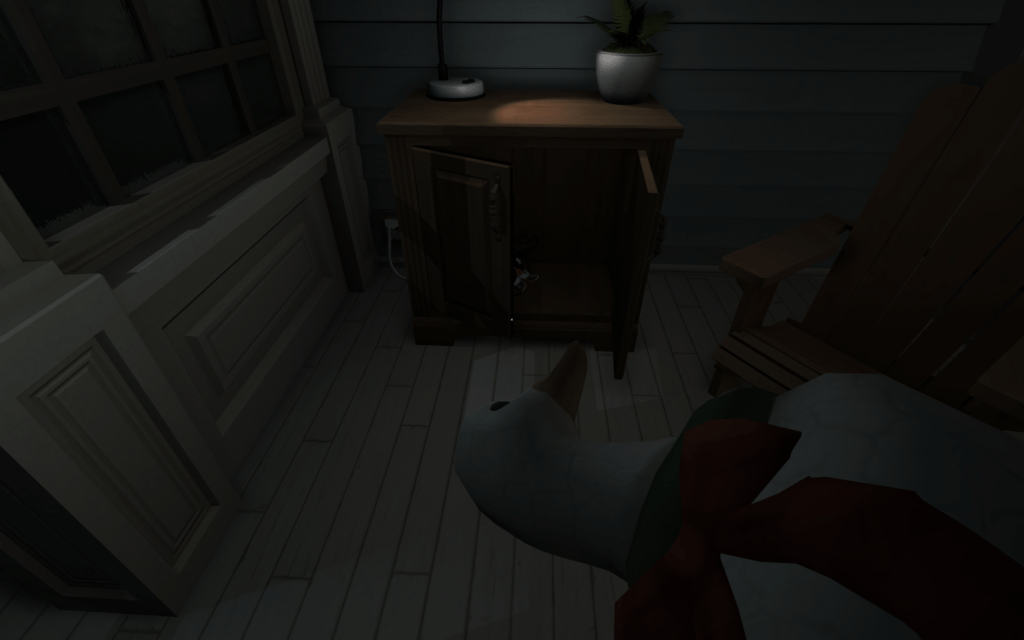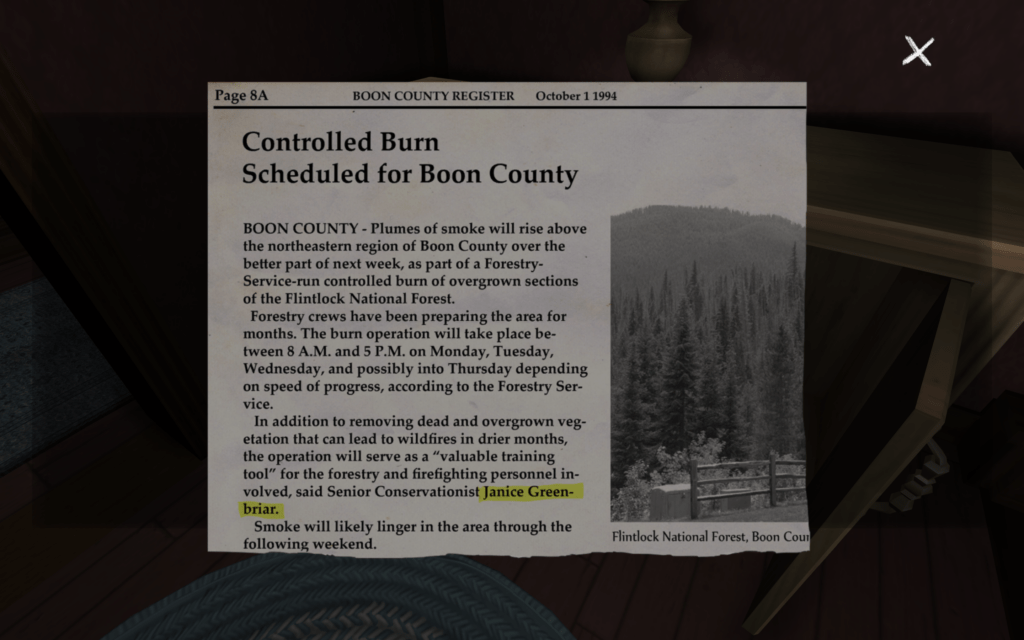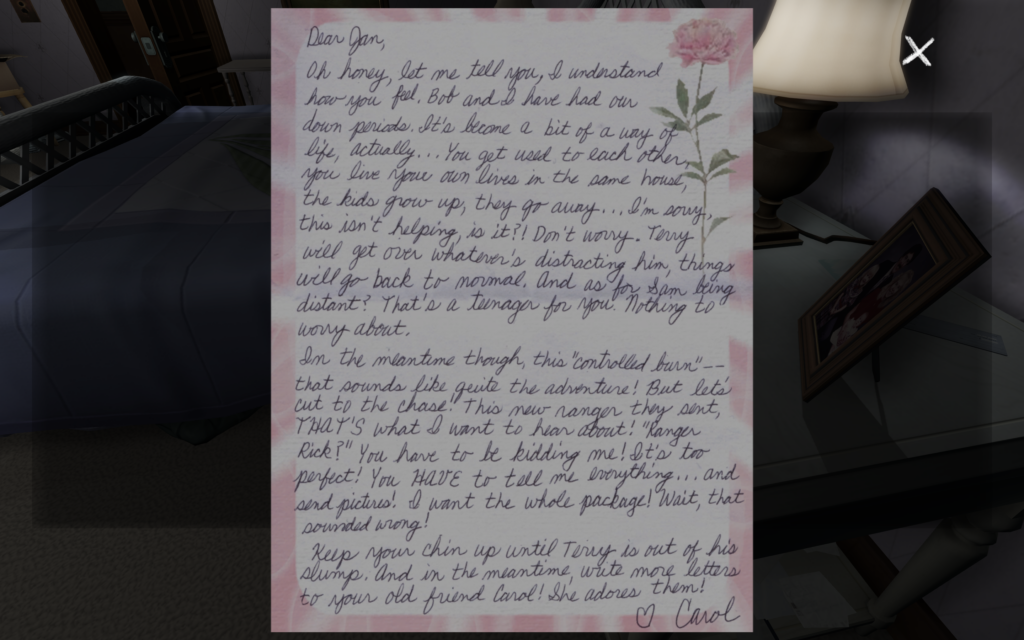For this critical play I chose Gone Home. It was developed by Steve Gaynor, Karla Zimonja, and Johnnemann Nordhagen at Fullbright Studios. It is probably designed for people about 13 and older with an understanding of familiar issues. The main mechanics are walking using your keyboard arrows, looking around using your mouse, picking up/examining things by looking at them and clicking, and crouching using the control button. These mechanics, along with the eerie aesthetic of the setting and plethora of personal mementos to be discovered around the house, drive the narrative behind the mystery of “where did Katie’s family go?”
With limited mechanics and only the space of one house to explore, loops and feedback played a large role in driving this narrative. When you start the game, you are faced with a locked front door.
This is the first opportunity for feedback. There are no directions that tell you where to look for a key, you must simply practice walking, looking, and grabbing until you grab the right object that reveals a hidden key (in this case the object was a goose, sorry for the spoiler). This loop of coming to a stop/road block, looking around to find the necessary object, and discovering a new space is the main way to progress in the game.
Sprinkled within this loop are thematic details that both help the player find out more about the mystery and also find these new hidden spaces that advance the game. In every room there are notes, cassette tapes, magazines, books etc that subtly reveal all of the problems that this family had with each other. What gets the player to actually read all of these notes is that some of them reveal hidden passageways that get you to the next “level” in the game, so you cannot just glance over one in case it reveals one of these new parts. This dynamic of checking literally every single object you can find pushes discovery as the main type of fun in this game. I also am not sure if this was a design choice or if this just happened to be the case for me, but the notes that you find start off without much personality- eg being a note from school or a work letter or a weekly checklist- and get more and more personal as you continue to discover them- eg diary entries, letters from friends with relationship advice, and other deeply personal notes that definitely were not meant for other eyes to see. I think the increase in juiciness of the notes helps drive the narrative as well as keep the player motivated to repeat the game loops. Blow is an objective newspaper clipping vs a personal note from Katie’s mom’s friend.
Another key driver of the narrative and hence the mystery are these arcs of “scariness.” This again might have just been something I personally experienced, but there seemed to be loops of play that would start off with scary trends, that with gameplay, would become much less scary and expected, until you reach a new loop and there is a new thing to be afraid of. For example, when you first walk into the house there are scary thunder rumblings that initially made me jump, as well as very dark spaces that you are forced to enter to then turn on the light, where again you don’t know if something scary will pop out. At first, this made me tentative to play, but eventually, after some feedback, I learned that nothing scary ever happens when you turn on a light, and that the thunder rumblings do not signal that anything bad is going to happen. I got used to this loop, but just as I felt comfortable, I discovered a clue that led me into a secret compartment with weird old pictures and crosses and a design that was unfamiliar with the rest of the house layout that I had just been getting used to. Yes, this made me more scared and my game play slower again, but it definitely got my interest back up. I would consider these changes in scary challenges game arcs that aim to help push the player away from burnout and advance the narrative.
I did not play more than a few hours of this game, so I did not get to many of these arcs, but I will comment on how this one changed the narrative of the mystery. Before this new arc, I was under the impression that there were some marital issues going on and that Katie had a rebellious sister with a bad influence friend. But, this new arc revealed that there were secrets in the house that go way beyond simply just some basic family problems. The word “ghost” was presented to me for the first time and all of a sudden my perspective of the mystery was flipped on its head. I enjoyed this change and could see myself definitely getting bored of exploring the same old rickety house if it was not for the new hidden passageway arc.
All in all, Gone Home utilizes arc and loops to develop a complicated and intriguing narrative despite very limited mechanics. I am not usually a spooky game kind of person, but I am in too deep now to give up on solving this mystery.






